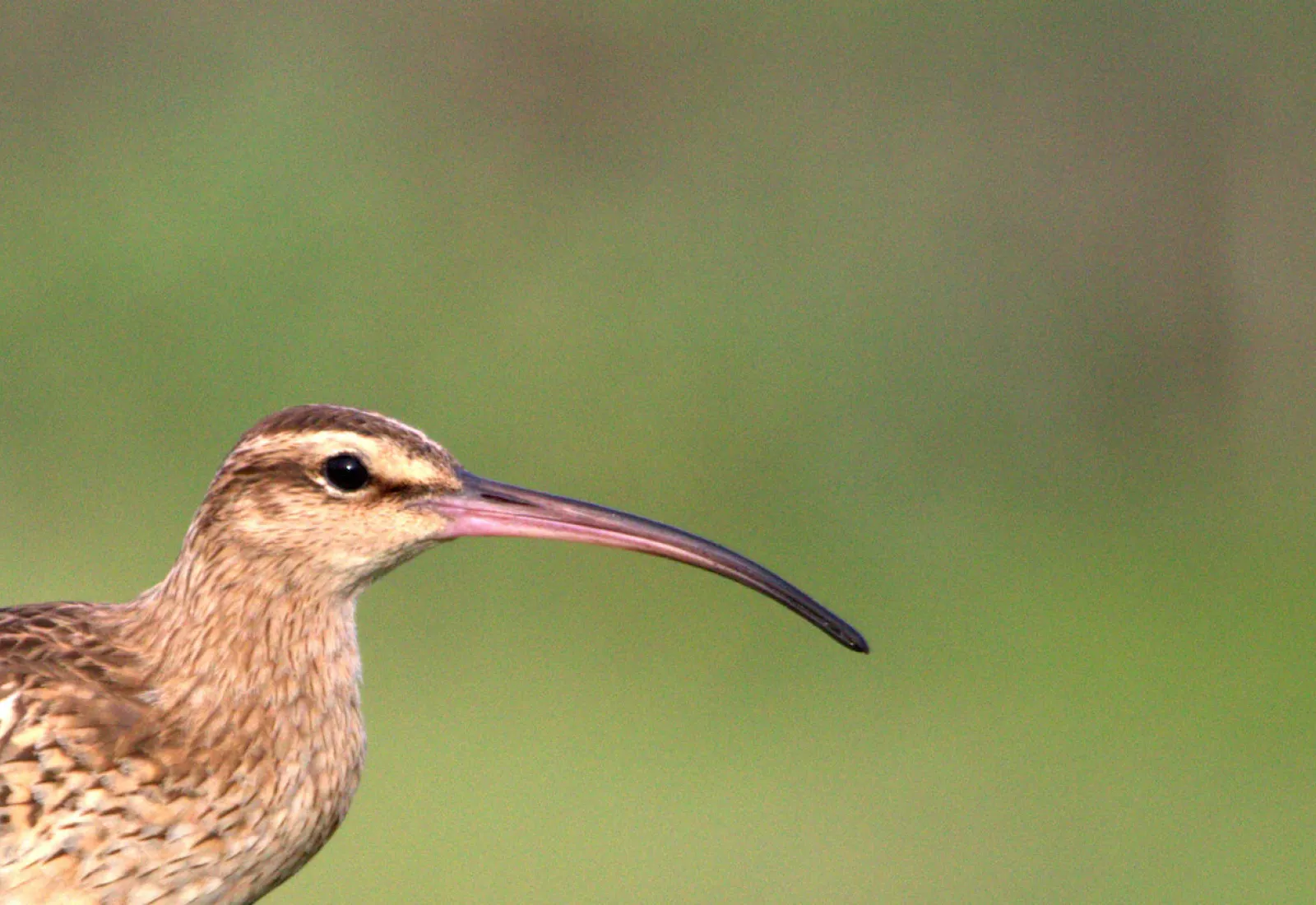The Bristle-Thighed Curlew (Numenius tahitiensis), called Te'ue in Tahitian, is a unique shorebird that stands out for some surprising behaviors.
This bird is named for its bare shafted thigh feathers and has a long, curved beak and caramel coloring that blends in perfectly with the tundra where it breeds in two areas near the Yukon river in Western Alaska. The estimated population of these rare birds is currently 10,000 with just around 3,500 breeding pairs.

These birds blend in perfectly with the colors of the Alaskan tundra.
Photo: Lars Petersson
These birds are also the only shorebird that has adapted the use of tools in foraging behaviors. Bristle-Thighed Curlews have been known to break albatross eggs open by pounding them with sharp rocks and also employ a method of “whipping” crabs against rocks in order to break apart their hard shells.
The Bristle-Thighed Curlew is also the only bird to become flightless during molt. These birds have a very rapid basic molt, leaving roughly half of the population unable to fly during the process. This has only recently become detrimental as they previously lacked ground predators such as rats (and mongoose in the Hawai’ian Islands). The Bristle-Thighed Curlews that overwinter on Tetiaroa will benefit greatly from the upcoming rat eradication.

Photo: Brad Argue
With a travel distance of 4,000 to 6,000 km to and from their breeding and wintering habitats, adult Bristle-Thighed Curlews clock in up to 12,000 km yearly. Making the round trip between two specific breeding and staging grounds in Western Alaska, and tropical and subtropical islands and atolls throughout Oceania, these birds have a few strategies that are as surprising as they are effective.

Bristle-thighed curlew chick
Between the months of May and August, adult Bristle-thighed Curlews breed in Alaska, taking turns guarding the nests of mottled, olive colored eggs, and foraging. When the babies hatch after around 25 days, they are left at first with the males while the mothers begin staging, or preparing for the long flight back to the tropics.

Eggs are laid on the ground.
As the days begin to shorten, both males and females begin their extreme foraging and fattening up and the young are left in groups with a few adults taking turns watching over them. This community rearing is crucial because the window of habitable weather in Alaska is small. In order to make the long, nonstop flight, these birds gain up to 50% of their body mass in fat, substantially more than any other shore bird.

Fattened-up curlew, ready for the long migration to the tropics.

Photo: By Forest & Kim Starr, CC BY 3.0, https://commons.wikimedia.org/w/index.php?curid=6161901
Bristle-Thighed Curlews migrate in small flocks, averaging 14 individuals per flock. They almost exclusively begin their migration at dusk in the absence of headwinds. They are well known for their openness to share flights with other birds, most notably the Pacific Golden Plover. Bristle-Thighed Curlews have been observed following large groups of migrating plover in order to catch a tailwind ride. The plovers don’t seem to mind the company from the larger birds which have exceptional navigation skills.
You can see Bristle-Thighed Curlews on Tetiaroa September to May, walking the beaches and sometimes on the reef crest looking for crabs and other invertebrates.
When startled, their cry is a piercing cat-call whistle and if you can imitate it they will come by to check you out.

Photo: Rory Stansbury


